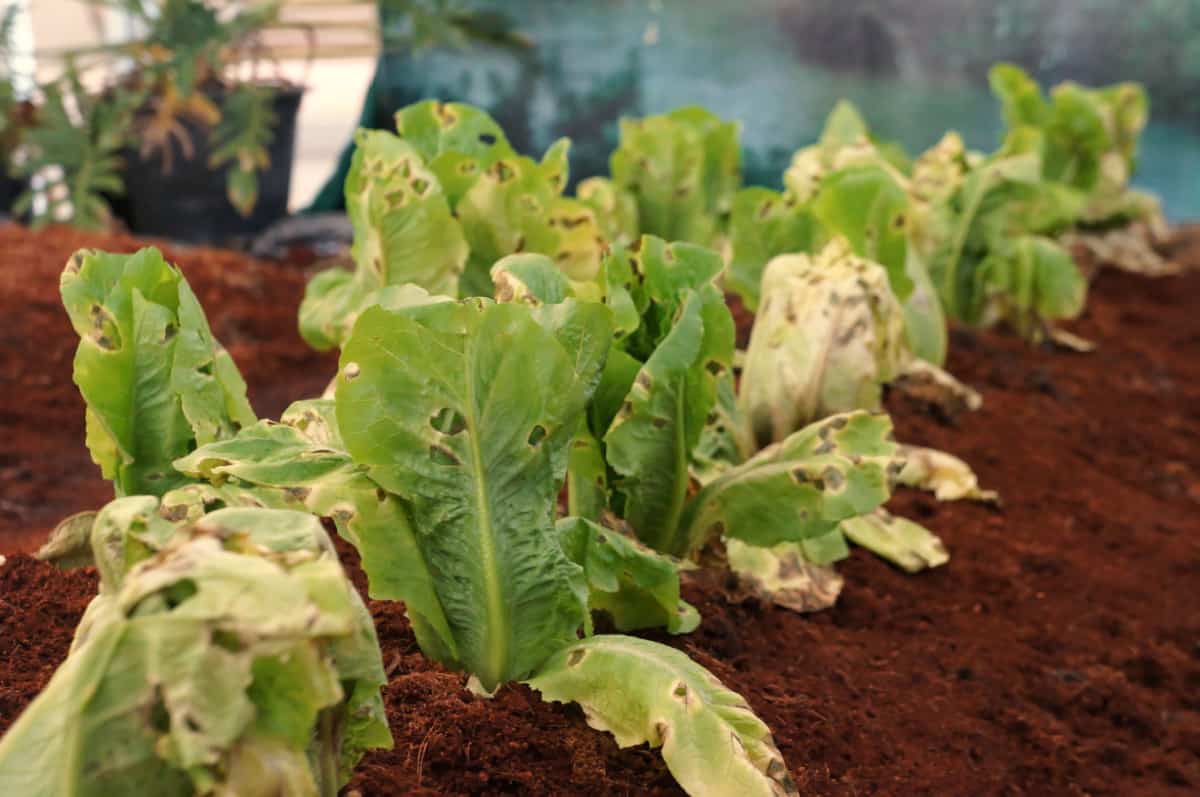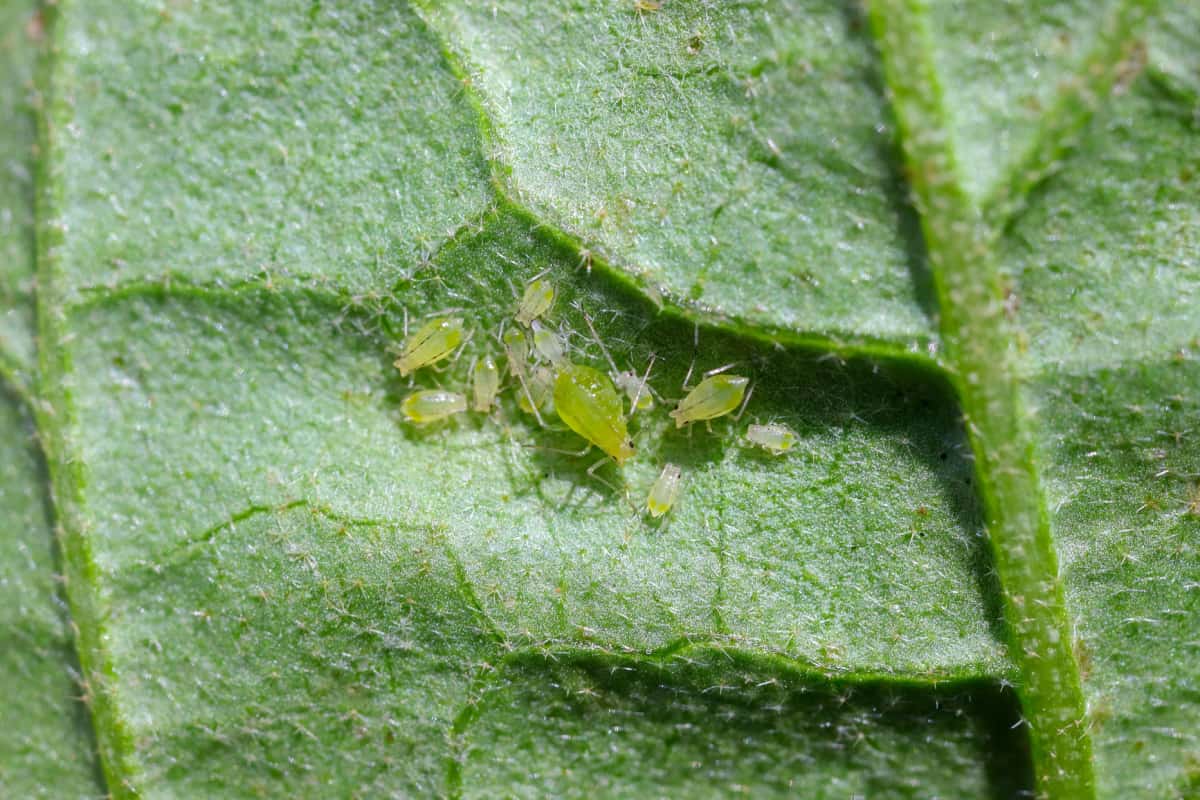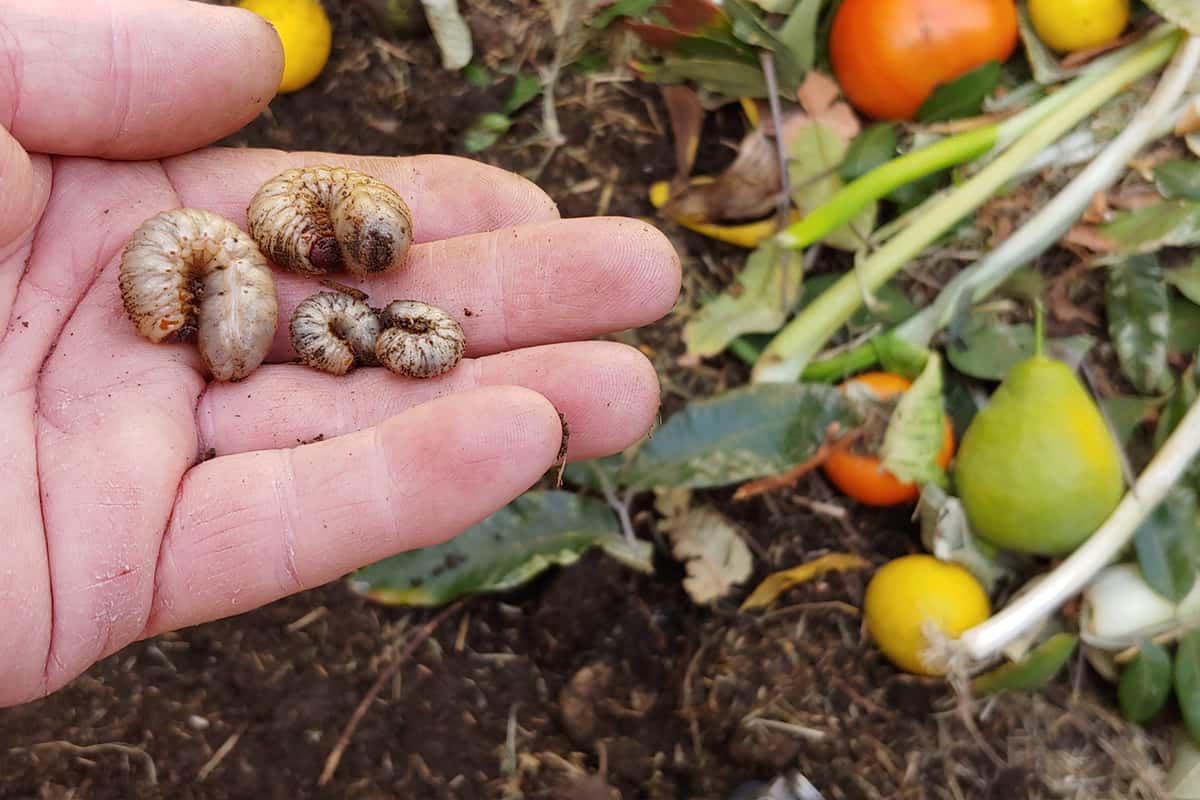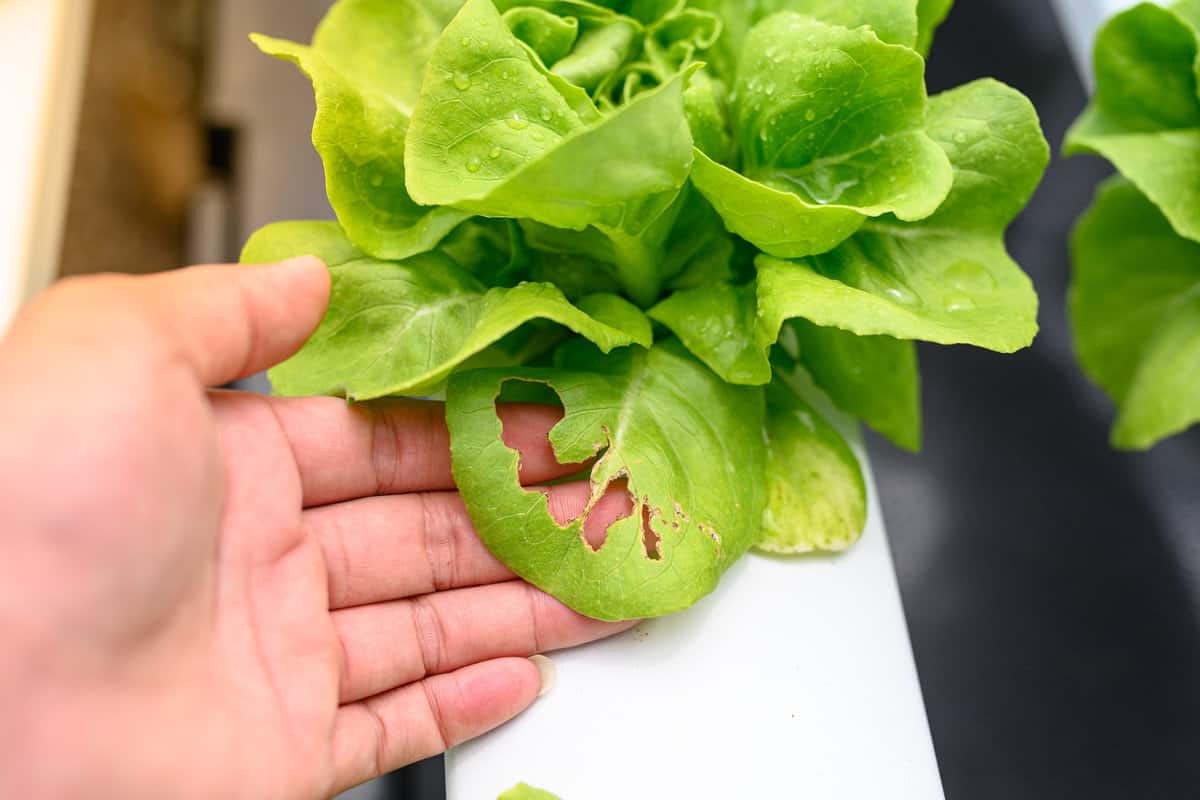When it comes to growing your lush and beautiful salad garden, there’s nothing more heartbreaking than seeing your painstakingly nurtured leafy greens succumbing to an uninvited group of pests.
We understand; each crisp head of lettuce or tender baby leaf holds a special place in every gardener's heart.
That's why we've put together this handy guide to help you out.
Whether you're new to the gardening scene, a seasoned salad farmer, or someone who simply enjoys the blissful tranquility of tending to your garden, this guide will walk you through the infamous lineup of lettuce-loving culprits.
Let's discover their sneaky tactics, understand what makes your greens so irresistible to them, and most importantly, reveal practical and eco-friendly ways to keep them at bay.
So, get your gloves on, grab your trusty garden trowel, and let’s get ready to defend your precious lettuce plants.
Most Common Lettuce Pests

Lettuce is a popular leafy vegetable grown in gardens and farms worldwide.
As a lettuce enthusiast, you may have encountered various pests that can wreak havoc on your cherished plants.
Recognizing and understanding these common lettuce pests is essential to help you maintain a healthy and bountiful lettuce crop.
Diseases and pests can put your lettuce crops at risk, making it crucial to adopt appropriate pest management strategies to safeguard your precious greens.
Below are several types of pests that you may encounter while growing lettuce:
1. Beetles
One common problem you might face while growing lettuce is the presence of various beetles.
To protect your lettuce, try incorporating floating row covers, and rotate your crops, so these beetles do not infest the same area year after year.
2. Greenhouse Whitefly

The greenhouse whitefly can also be a nuisance for your lettuce crops.
These small flying insects feed on the sap of lettuce leaves, which can lead to yellowing leaves or stunting growth.
To control whiteflies, you can introduce natural predators such as ladybugs, lacewings, or parasitic wasps in your garden.
Additionally, regularly check the underside of leaves for eggs, and remove any infested foliage.
3. Leafhopper
Leafhoppers are small insects that can cause damage to your lettuce by feeding on the sap in the leaves.
They are known to spread diseases such as aster yellows.
To keep leafhoppers at bay, you can use bright yellow or blue sticky traps near your plants and consider releasing beneficial insects like ladybugs and lacewings in your garden.
4. Slugs and Snails
Slugs and snails may feed on your lettuce leaves, leaving holes and ragged edges.
To deter these pests from your lettuce, you can use copper tape around the edges of your growing beds, as slugs and snails do not like to cross copper barriers.
Alternatively, you can set up beer traps nearby or encourage natural predators like birds, frogs, or hedgehogs, which help keep slug and snail populations in check.
5. Potato Aphids

Potato aphids (Macrosiphum euphorbiae) are one of the most common pest species on lettuce.
These tiny, soft-bodied insects are pink or green and feed on your lettuce plants by sucking the sap from their leaves and stems.
This can lead to distorted growth, yellowing, and wilting of your plants.
To help reduce the chances of a potato aphid infestation, you should practice proper sanitation by removing weeds and plant debris that can harbor these pests.
Also, consider using biological control methods such as introducing beneficial insects like lady beetles and lacewings that prey on aphids.
6. Green Peach Aphid
Green peach aphids (Myzus persicae) can also cause significant damage to your lettuce plants.
These small, green insects are known to transmit plant viruses, leading to leaf curling, stunted growth, and poor plant health.
One study suggests that they have become a more important pest in lettuce than the potato aphid.
To manage green peach aphids, introduce natural predators like parasitic wasps or use insecticidal soaps.
Practice crop rotation and avoid planting lettuce next to other susceptible plants, such as potatoes and peppers.
7. Bean Aphid
Bean aphids (Aphis fabae) are another common pest that can attack your lettuce plants.
These black, shiny insects often cluster on the leaves and stems, causing discoloration, curling, and distorted growth.
They can also transmit viruses that can further weaken your plants.
To prevent bean aphid infestations, try planting some lettuce varieties that are less attractive to aphids, such as oakleaf, red leaf, or romaine.
Introduce beneficial insects like lady beetles, lacewings, and hoverflies to your garden, or use insecticidal soap sprays to help control bean aphid populations.
8. Beet Armyworm

Beet armyworms (Spodoptera exigua) are small, green caterpillars that can cause considerable damage to your lettuce plants.
They typically feed on the underside of leaves, creating irregular-shaped holes.
To protect your lettuce from beet armyworms, check your plants regularly and try using natural enemies like parasitic wasps that target these pests.
9. Cabbage Looper
Cabbage loopers (Trichoplusia ni) are green caterpillars with a distinctive looping movement, earning them their name.
They create large, irregular holes in lettuce leaves, and if left unchecked, can destroy entire plants.
To manage cabbage loopers in your garden, introduce natural predators such as predatory wasps or lacewings, and keep an eye out for the characteristic looping movement to detect their presence early on.
10. Imported Cabbageworm
Imported cabbageworms (Pieris rapae) are small, green caterpillars that are quite common in vegetable gardens.
They feed on lettuce leaves, creating small holes and reducing the overall quality of the crop.
You can minimize damage from imported cabbageworms by using floating row covers or by attracting natural enemies like parasitic flies and wasps.
11. Cutworms

Lettuce crops may be plagued by cutworms, which can chew through young plant stems causing the plants to collapse.
Cutworms are caterpillars belonging to the Noctuidae family, and they attack the base of lettuce plants, often severing the stem entirely.
Cutworms are typically more active during the night, making it crucial to inspect your plants regularly for any signs of damage.
To protect your lettuce from cutworms, consider using physical barriers like cardboard collars around the base of the plants or applying insecticides labeled for cutworm control.
Prevention Methods
Here are some of the ways you can protect your precious lettuce leaves from attackers.
Cultural Practices
To prevent lettuce pests, you should start by implementing good cultural practices.
These methods can help minimize the risk of pest infestation, increase the overall health of your lettuce plants, and improve crop yield.
Firstly, practice crop rotation to disrupt the life cycles of pests.
Avoid planting lettuce in the same spot year after year to reduce the buildup of pests and diseases in the soil.
Another essential cultural practice is proper sanitation in your garden.
Regularly remove crop residues and weeds that may harbor pests or provide an environment for them to thrive.
Additionally, keep the area around your garden clean and free of debris, as it can serve as potential hiding spots for pests.
Choosing resistant lettuce varieties can also minimize pest damage. Opt for varieties known for their resistance to common lettuce pests.
These plants have been bred for their resilience and can withstand pest attacks more effectively.
Biological Controls
Biological controls involve using natural predators or parasites to combat pests.
One effective method to control aphids in lettuce is using in-field insectaries. These are areas in your garden where you introduce beneficial insects, such as ladybugs, lacewings, and parasitic wasps.
These beneficial insects can help keep aphid populations under control.
Another biological control strategy is using RNAi-mediated resistance in genetically engineered lettuce. This technology reduces the number of pests by interfering with their feeding behaviors.
Chemical Controls
If you have no other option and must use chemical controls, always opt for the least toxic and most environmentally friendly products.
Look for pesticides specifically labeled for use on lettuce and approved for controlling your target pests.
Try this worm and caterpillar insecticide on Amazon.
Always follow the label instructions when applying pesticides and practice proper application techniques to minimize potential harm to your plants and the environment.
Remember that chemical controls should be a last resort. Whenever possible, focus on cultural practices and biological controls first.
By implementing a comprehensive pest management plan, you can prevent common lettuce pests and enjoy healthy, thriving crops.
Detecting Damage and Monitoring Your Lettuce Plant

Physical Signs
To detect physical signs of common lettuce pests, you should regularly inspect your lettuce plants for symptoms such as leaf damage, discoloration, or curling.
Some pests like the lettuce aphid can leave visible signs of feeding on lettuce leaves, making it easier to recognize their presence.
Additionally, you should look for pest droppings or eggs on the leaves and the presence of pests themselves, as this can help you identify a potential infestation.
Keep in mind that these signs may not be immediately noticeable, so consistent inspections of your lettuce plants are essential.
Trapping and Monitoring
To implement effective trapping and monitoring methods for common lettuce pests, you can utilize different approaches. Here are a few options:
Sticky traps
Place brightly colored sticky traps near your lettuce plants to attract and capture pests such as aphids and leafhoppers.
Check these traps regularly to help identify early infestations and monitor pest populations.
Try this dual-sided yellow sticky trap on Amazon.
Pest-Specific Traps
Utilize pest-specific traps, like pheromone traps, to catch specific pests that target lettuce plants.
These traps emit specific chemical signals that lure pests in, allowing you to trap and monitor their presence in your garden.
Visual Inspections
Regularly inspect your lettuce plants for signs of damage, as mentioned in the Physical Signs section.
Remember to also keep an eye out for the presence of pests, pest droppings, or eggs.
Record Keeping
Maintain a record of your observations, including pest sightings and damage levels.
This information helps you track the effectiveness of your pest control measures and adjust your management strategies accordingly.
By employing these methods, you can effectively detect and monitor common lettuce pests, giving your lettuce plants a better chance to thrive.
With consistent and careful observation, you can keep potential infestations under control and protect your lettuce crop.
Protect Your Lettuce Crop
being aware of the most common lettuce pests and taking preventive measures can help you protect your lettuce crop and enjoy healthy, delicious greens.
By identifying the signs of infestations early and using natural or chemical control methods, you can minimize the damage caused by pests and ensure a bountiful harvest.
Thank you very much for reading through! For more information on growing lettuce, check out these other articles below:
Will Lettuce Regrow After Cutting? Find Out Today!
Can Lettuce Survive A Freeze? [And How To Prevent It From Dying]


